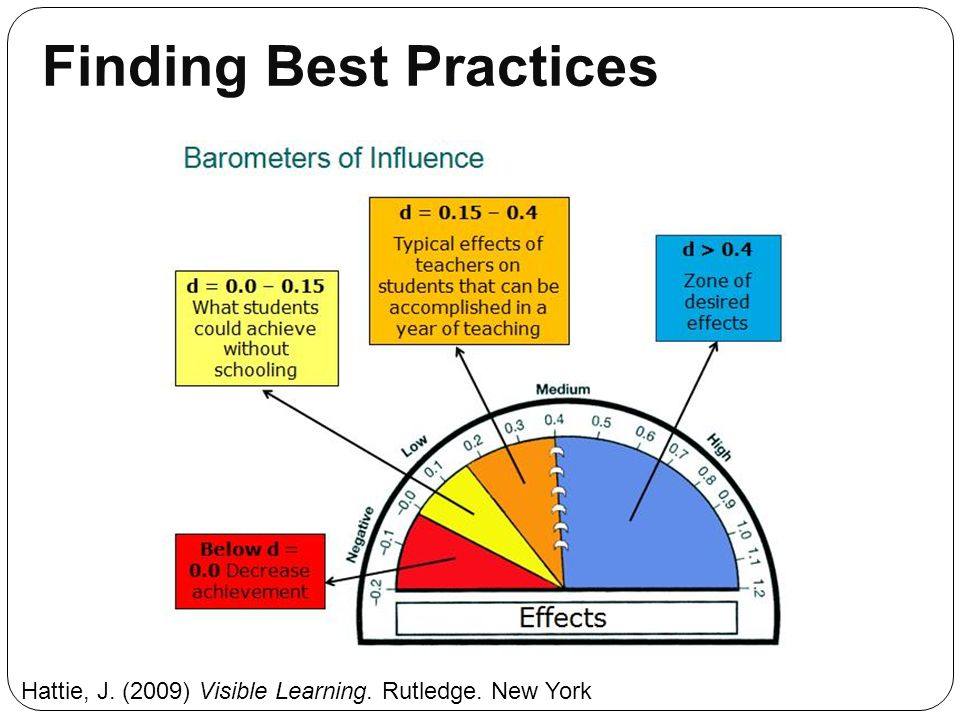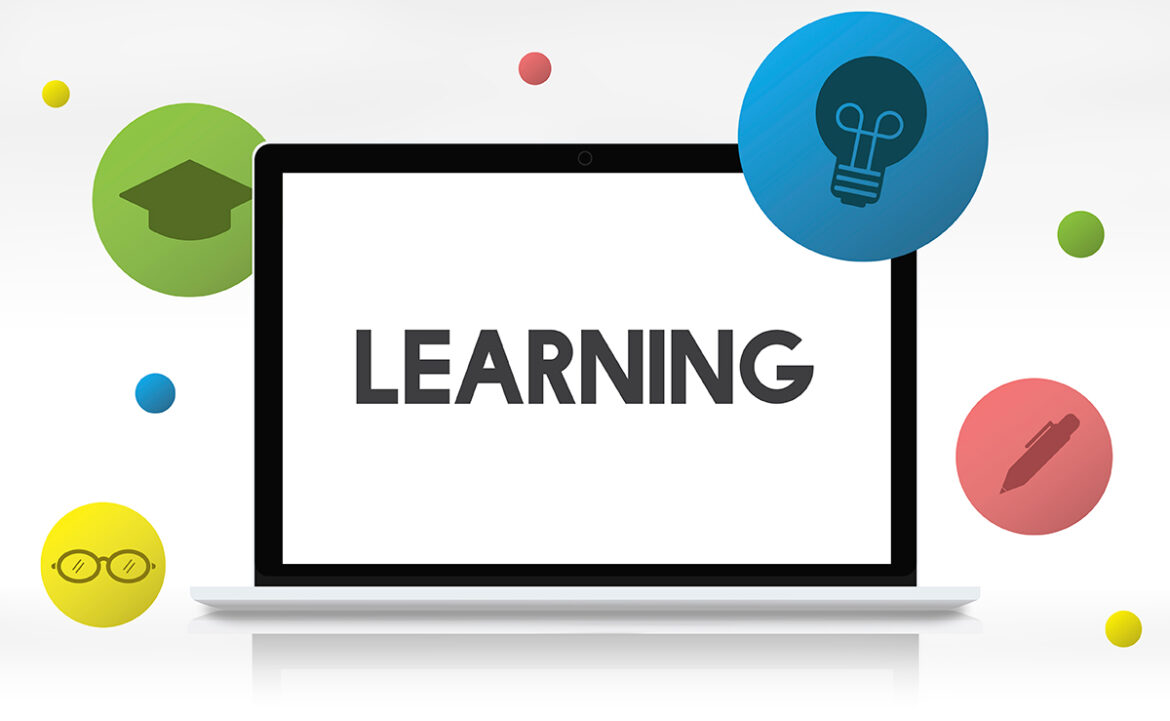If you know me, you know that I’m a big fan of research. I spend a lot of my time examining what the latest research says about teaching and learning and the use of technology and try to see how that all fits together for the best learning in the classroom. I know that teachers today don’t have time to try a million different things; they need research-based strategies that will definitely work in their classroom.
John Hattie
![]()
Lately, I’ve been studying the work of John Hattie and consider him as someone that every educator should know about. Hattie conducted more than 800 meta-analyses of research studies for his initial study and more than 1,400 meta-analyses of a total of 80,000 studies involving 300 million students for his final data. (A meta-analysis uses a statistical approach to combine the results from multiple studies in an effort to improve estimates of the size of the effect.) He was looking at the effect sizes of the many strategies that influence learning outcomes. In other words, he looked at a HUGE amount of previously-done studies to determine what provided the biggest bang for the buck in learning. His results are available in his book Visible Learning and others.
Effect Size of Research-Based Strategies
But before we can look at what Hattie discovered, we have to understand a little bit about effect size. “Effect size” is a quantitative measure of the magnitude of a phenomenon. In other words, it tells you how “good” or “valid” something is. In education, researchers typically use the illustration below to help define effect size.

If a study says that something has an effect size below 0.0 (the red zone), then it has an actual negative impact on learning. Moving between schools, for example, has an effect size of -0.34 and a lack of sleep has a negative effect size of -0.05. (A word of caution: if a vendor is trying to sell you a product with a negative effect size, don’t buy it!)
If a study says that something has an effect size between 0.0 and 0.15 (the yellow zone above), then it has the same effect on learning as you would expect to happen over one year for students who did not attend school but simply matured. It’s not a negative effect; it just doesn’t make any difference. Single-sex schools (0.08) and school choice programs (0.12) are two examples.
If a study says that something has an effect size between 0.15 and 0.4 (the orange zone), then it has the same effect on learning that you would get from students attending school for one year. Examples include summer school (0.23), preschool programs (0.28), and ability grouping for gifted students (0.30). These aren’t bad; they just don’t provide as much “bang for the buck” as might be hoped.
What we want to see is an effect size of 0.4 or greater (the blue zone), meaning that the phenomenon causes a significant difference in learning. Anything above that magic 0.4 number is golden. Hattie, from all of his research, has put together a comprehensive list of 252 influences and their accompanying effect sizes that you can look at. It’s pretty eye-opening, to be honest. You may be surprised at some of the strategies that we use in education that really don’t make much of a difference.
The Research-Based Strategies That Work Best
What Hattie found is that “the key to many of the influences above the d = 0.40 hinge-point is that they are deliberate interventions aimed at enhancing teaching and learning.” (Visible Learning for Teachers, p. 17) That means that we can choose to implement them; it’s something that we have control over. And the really good news is that they don’t require additional funding, just time and thought. By using his research, we can work smarter and make a profound difference in student learning. Here are the nine that we will examine:
- Collective teacher efficacy
- Self-reported grades/student expectations
- Cognitive task analysis
- Response to intervention
- Jigsaw method
- Conceptual change programs
- Teacher credibility
- Micro-teaching/video review of lessons
- Classroom discussion
Because this is so important for what we do every day in education, I would like to take several blogs to discuss the top nine strategies for accelerating learning. We’ll examine what each one means, how it works, and see if there are any technologies that could be used effectively with it. In the next blog, we’ll look at numbers 8 (Micro-Teaching/Video Review of Lessons) and 9 (Classroom Discussion).
Taking Action
I would encourage you to share these blogs with your peers and discuss what they might mean in your specific teaching and learning situation. Then select just one to implement for the next few months. I would love to hear back from you on how this is going and what changes you are seeing in student engagement and achievement.


4 comments
Hi – thank you for taking the time to write this blog as well as narrowing down the strategies. It would have been helpful if you’d listed the nine you are going to go into detail about.
Thanks, Jassmon. Great idea! I’ll add those. Thanks for reading and writing!
Lori, thank you for the technote on Hattie. I am reading his works too. I would love your comments on the SOLO taxonomy, which he states that he used in his researsch. It is widely used in the UK and Australia, but in the U.S. we are only familiar with Bloom’s multiple intelligences, Webb’s depth of knowledge, and in education, Marzano’s taxonomy of cognitive processing. SOLO seems so very applicable to elementary in all areas, but especially in activities related to developing Computational Thinking. Thanks for any comments, links to other educators in the U.S. who might have entegrated it in their efforts to bring CT to the classroom.
Eugenia, I think the SOLO is a great step up from Bloom’s in that it takes learning to greater depth. However, because it is at a higher level, I think it’s difficult to implement. Just understanding the differences between the levels can be daunting. I personally lean toward Marzano’s taxonomy as it measures almost as complex thinking, but is a little easier to understand. This would be a great debate to have in our TCEA members Community with other educators. Thanks for sharing!